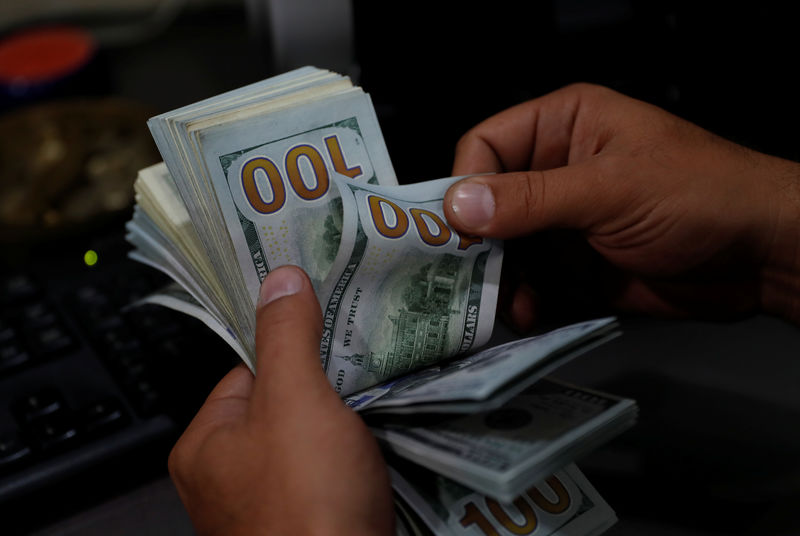 © Reuters. A money changer counts U.S. dollar banknotes at a currency exchange office in Izmir
© Reuters. A money changer counts U.S. dollar banknotes at a currency exchange office in IzmirBy Daniel Leussink
TOKYO (Reuters) – The dollar stood tall on Friday against its major peers, including the yen and euro, as investors evaluated the impact of a two-day global government bond rout that has lifted U.S. Treasury yields to seven-year highs.
The yield on the benchmark 10-year U.S. Treasury note hit its highest levels since May 2011 after private payrolls data came in stronger than forecast.
The private payroll numbers were seen as boosting the odds that official U.S. jobs data for September due later in the day would also be stronger than expected.
The dollar rose 0.1 percent to 114.04 yen after coming off an 11-month high of 114.55 yen reached during the previous session. A rise above 114.735 would take the greenback to its highest level since mid-March 2017.
The yen was helped by a Reuters report that the Bank of Japan will tolerate further increases in super-long yields as long as the increase does not push 10-year yields well above its zero percent target.
“The dollar’s strength against the yen will become clear if the U.S. employment figures come out strongly,” said Yukio Ishizuki, senior currency strategist at Daiwa Securities.
“I think it will put dollar/yen on course to test the 115 yen level during this month.”
Ishizuki added that he expected the dollar to strengthen against the euro, to the $1.14 level, just as the greenback gains on the yen.
The euro was not far off-six week lows against the dollar, trading basically unchanged at $1.1515.
On Thursday, the common currency ended the day with a 0.55 percent gain, paring some losses after slipping for six sessions in a row against the greenback.
The euro is down about 0.8 percent against the dollar so far this month. Euro zone government bond yields rose sharply on Thursday after U.S. economic data bolstered the case for interest rate hikes in the world’s largest economy and sent Treasury yields to multi-year peaks.
The , which measures the greenback against a basket of six currencies, was flat in Asia at 95.781.
The pound was steady at $1.3021 following a gain of 0.6 percent overnight, coming off a 3-1/2-week low of $1.2925.
The Australian dollar, often viewed as a barometer of risk appetite, was basically flat at $0.7078. The has slipped during the past three sessions, falling 1.9 percent this month.
Fusion Media or anyone involved with Fusion Media will not accept any liability for loss or damage as a result of reliance on the information including data, quotes, charts and buy/sell signals contained within this website. Please be fully informed regarding the risks and costs associated with trading the financial markets, it is one of the riskiest investment forms possible.
Source: Investing.com




























